If you’re a horse owner, this question is for you: have you ever walked into your horse’s stall and found the hay in the stall to be completely soiled in horse urine? Yea it’s not great for your horse or for you. It can be frustrating, especially if your horse continues the bad habit and, worse, refuses to now eat the once-good hay. Of course, nobody, including you, wants to spend time cleaning out bad hay and spending fruitless money on wasted hay.

Rest assured, there are many horse owners complaining all over the internet about this same problem and thankfully, there are solutions. Through this article, you can hopefully understand a little bit more about why horses pee on their hay, why it’s a problem, and what you can do to fix the problem. Let’s get started.
Contents
Why Do Horses Pee On Their Hay?
The main reason why horses pee on their hay is that horses despise splashing their legs with urine. Most likely your horse stall floor is made of concrete or some other hard surface material. If your horse urinates onto the stall floor, he will invariably get splashed, which, as we said, is not necessarily on a horse’s to-do list. So, if they see a padded surface like hay, sand, chips, or shavings in their stall that can absorb the pee rather than splashing their legs, that’s where he’ll pee. A horse may go to great pains to keep its legs clean and urine-stain free.
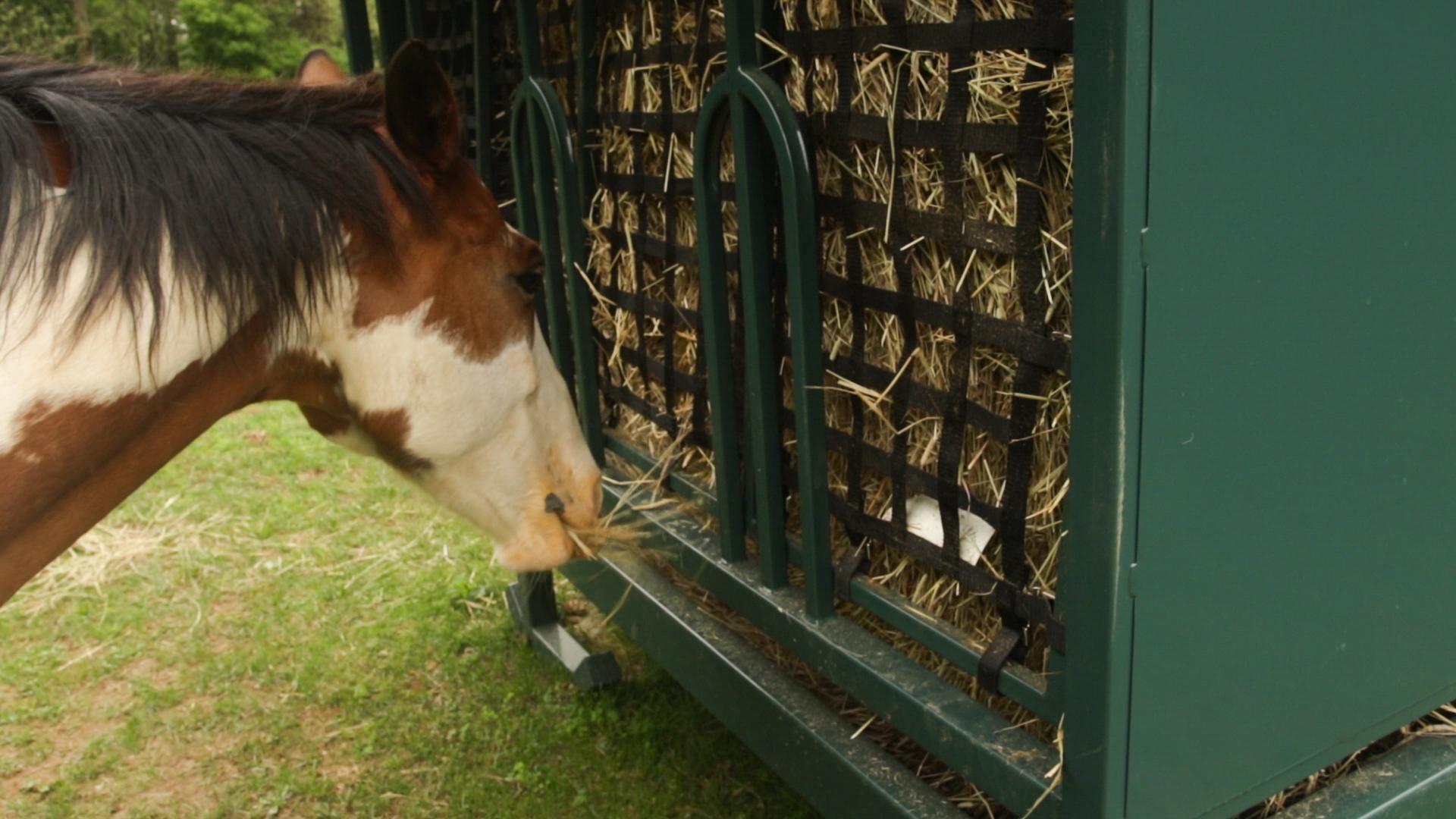
Another reason why horses may pee on their hay is if the horse thinks that the hay is distasteful or of poor quality. I mean, wouldn’t you be annoyed if you thought you were going to eat steak for supper but instead got served raw meat?
Or your horse may want to simply have a different kind of hay. You wouldn’t want to have mac and cheese for supper every night either, would you?
Of course, these are humorous analogies, but the point is that horses have taste palettes and want to eat quality food.
The Problem
The problem is that hay is wasted, which costs you money. It’s this simple. There are a couple of ways that your horse can waste their hay. Peeing on their hay is one reason.
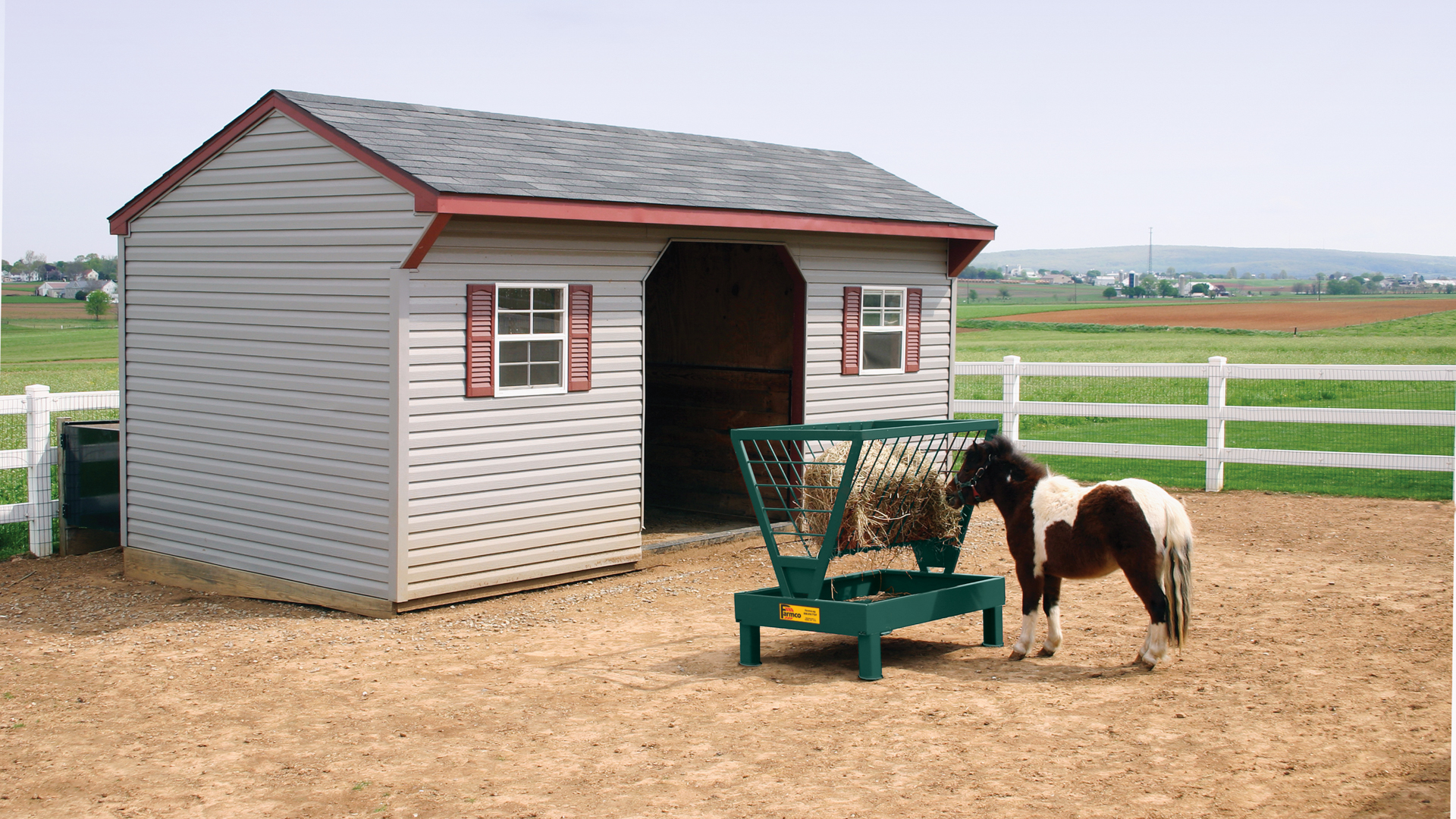
Hay Placement
However, if you look at the problem on a broad scale, the core issue is where the hay is placed. If it’s on the ground, your horse may urinate on it, trample it, etc. causing the hay to be lost. Hopefully, this section will give you a better picture of the problem of hay waste through some statistics and other information.
A horse’s reaction can vary but if you feed your horse hay from the ground, some horses will lay in the pee-soaked hay, eat it, or simply not eat any at all.
Health Risk
What’s worse is that if there is pee-soiled hay in the stall, it can be potentially harmful to your horse. A horse can develop soft feet or thrush.
Basically, if a horse’s hooves step in a lot of liquid or wet areas, they can become soft, which can ultimately harm a horse’s ability to walk.
Thrush is an infection that can develop in a horse’s foot, which can occur if the stall is dirty and moist. Having your horse step all over urine-soaked hay is no exception.
If you would like to learn more about why ground-feeding is bad for your horse, click here.

Some Hay Waste Statistics…
Of course, if your horse is wasting hay that means extra money from your pocket. Some of the reasons why the hay is wasted include horses laying in the hay, pooping on it, and of course peeing on it. The hay basically becomes manure-like and is rendered wasted. For those who love statistics, here are a couple of quick stats for you. Keep in mind these stats can vary but, hopefully, this is just a general idea of how much hay is going to waste and how much you could save.
Without a hay feeder, hay waste typically runs at about 31%-60%. On average, a horse consumes around 15-30 pounds of hay a day. Again, it may eat less or more depending on the kind of horse, activity of horse, etc. Speaking of horses consuming hay, here’s an article that talks about horse overeating.
So, here’s a couple of quick totals. Every week one horse consumes about 75-150 lbs. of hay. Using some quick math, that’s 450-900 lbs. of hay consumed in a month (roughly 30 days). By year (approx. 365 days), a horse consumes about 5,475-10,950 lbs. of hay a year. That’s a lot of hay!
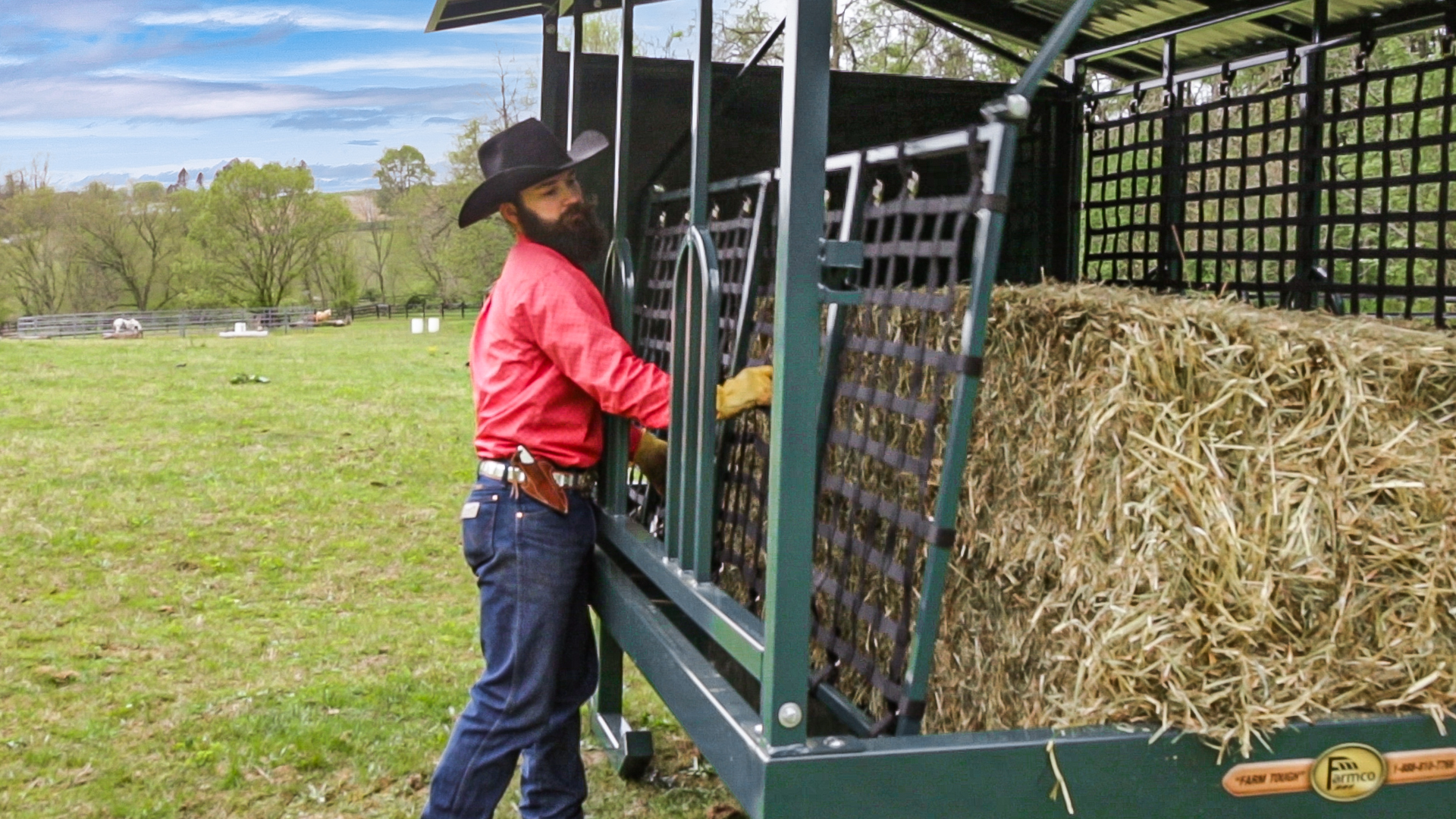
Now that we know roughly how much hay a horse consumes, here’s roughly how much hay is being wasted if the hay is fed without a feeder.
Every week, about 37.5-75 lbs. of hay is wasted. Monthly, around 225-450 lbs. of hay is wasted. This results in about 2,738-5,475 lbs. of hay being wasted every year. And that’s just one horse! For two horses, it comes out to roughly 5,500-11,000 lbs. of hay wasted a year.
Now that we know how much hay is wasted, it’s time to look at how much money is disappearing.
If you have one horse, you could be losing from around $63-$999 per year on hay waste. For two horses, you can potentially lose $126-$2,035 per year on hay waste. That adds up quick if you have, say a dozen horses.
How To Keep Your Horses From Peeing On Their Hay
The solution to the hay waste problem is simple and straightforward: get a hay feeder. Of course, you probably gathered that from the article already, but it’s true: even though it’s an investment, in the long run, a feeder is better than no feeder. Other than the fact that you can save a lot of money and hay with a feeder, eating out of a feeder can also be healthier for your horse. If the hay is on the ground, your horse will also inevitably consume dirt from the ground, which can cause irritations for the horse later. We also mentioned earlier that if a lot of hay is wasted, then your horse may not eat as much hay and suffer from weight loss.
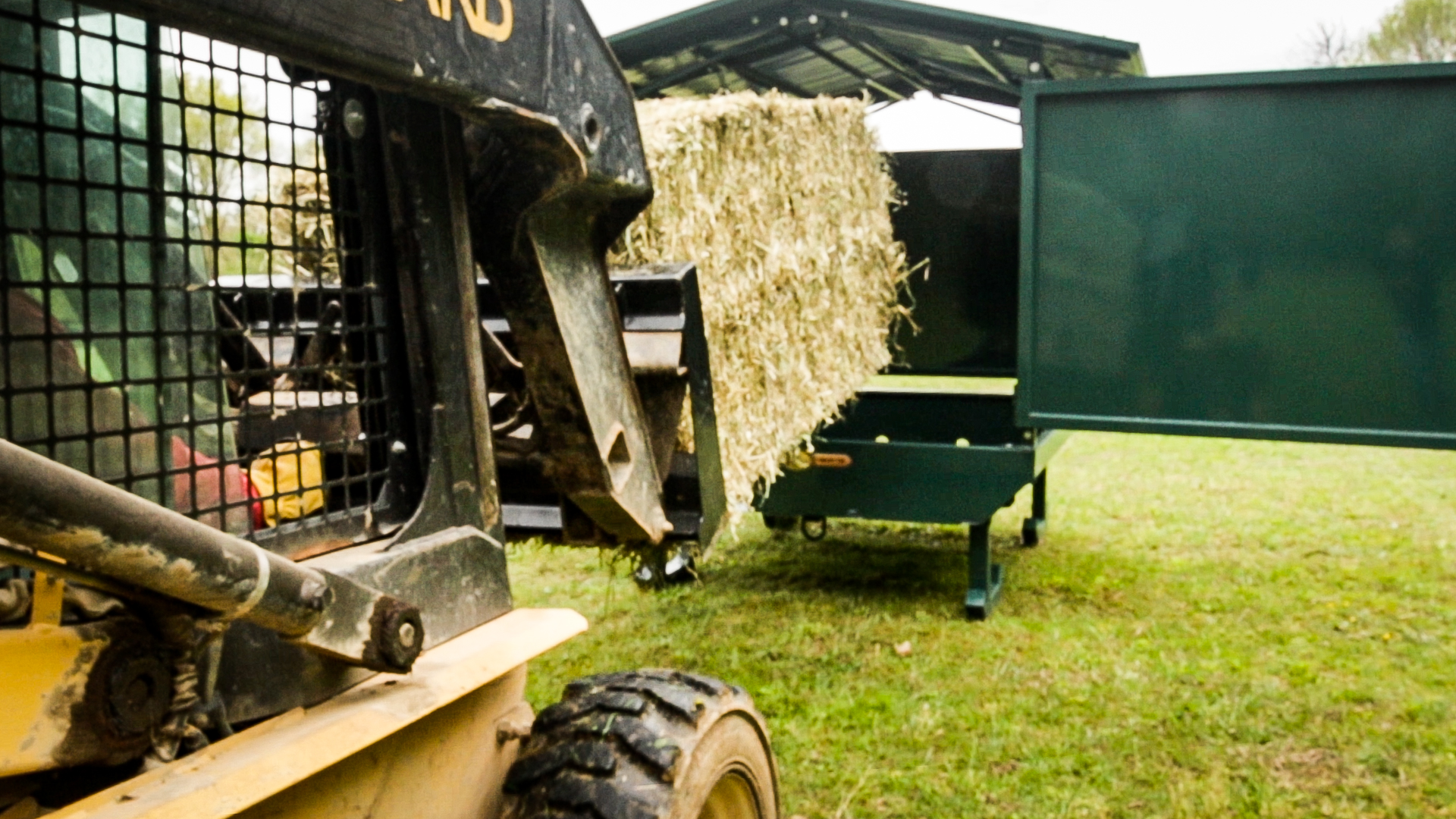
There are a lot of great feeders out on the market, provided by many reputable companies across the internet, so take time to research different companies and find out which hay feeder works best for your needs. Here are a couple of examples of common hay feeders that we offer but can be found all over.
Covered Hay Feeder
Covered hay feeders are great because they allow for the hay to be protected from the elements. An example of a covered hay feeder is our horse covered hay feeder that can feed up to 12 horses.
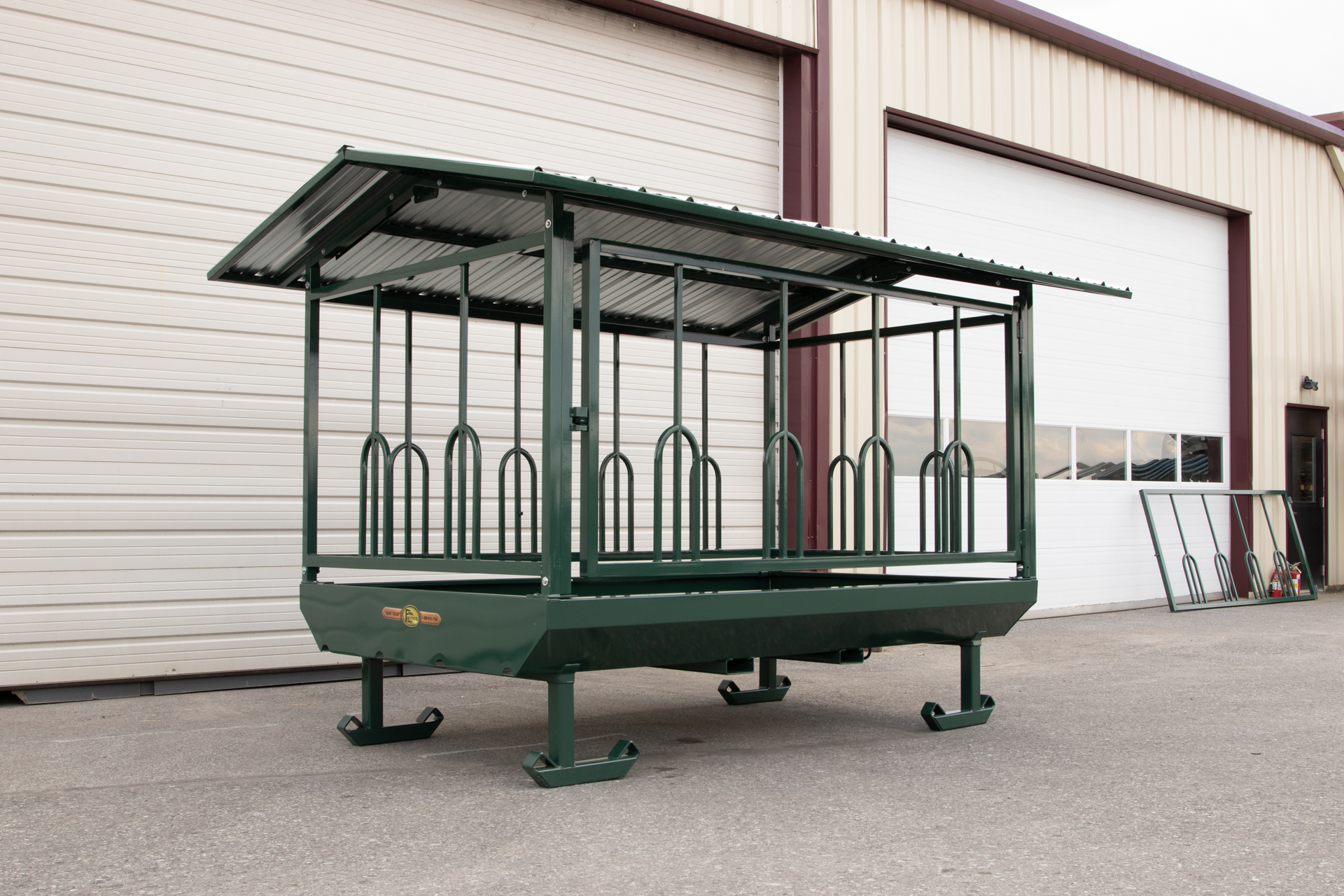
What makes this horse-covered hay feeder special is that you can set an entire round bale in the feeder and simply let your horses feed for possibly a week. With a heavy-duty metal frame and 29-gauge steel panels, the roof on our round bale horse hay feeder is made to last and designed to keep your horse’s hay dry and tasty.
“Slow-Feed” Covered Hay Feeder
Slow feeding is the healthiest way to feed hay to horses. By recreating natural grazing habits, slow feeding provides a steady stream of fibrous nutrition, which is critical for maintaining the health of equine digestive tracts. Speaking of healthy horse digestive tracts, we’ve got an entire article dedicated to horse colic prevention and another article on symptoms of laminitis in horses. Plus, the right slow hay feeder can reduce feed costs drastically by cutting hay waste to almost zero.
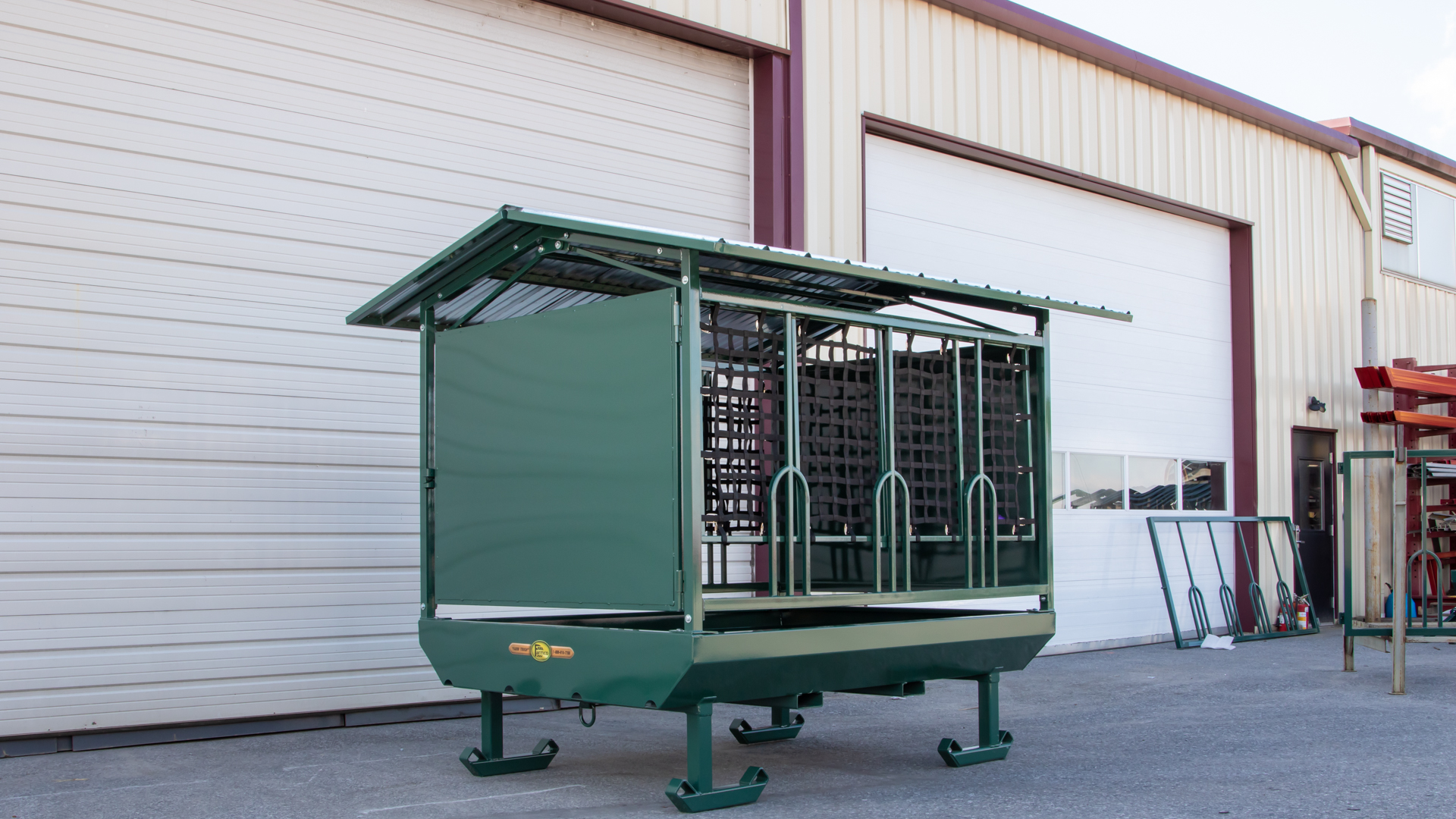
To reduce hay waste and protect horses from potential mold exposure, our slow hay feeders for horses come standard with a 29-gauge metal roof to shield half-eaten bales from the rain. Eight drain holes remove any moisture that does make its way into the trough. Our HF series slow hay feeder pays for itself with hay savings, usually within 24 months. If you’re concerned about how healthy a slow feeder is for your horse’s teeth, our “Are Slow Feeders Bad For Horses’ Teeth” article is a great resource.
If you’re looking for a great study to see a comparison of different types of hay feeders, “Round-bale feeder design affects hay waste and economics during horse feeding” is a great resource where you can learn more. If you’re also interested, you could read more about our metal hay feeders.
All That To Say…
Hopefully, through this article, you can better understand better the horse-hay-pee conundrum, the hay waste problem, and the ways to prevent hay waste. If you’re interested in learning more about our hay feeders, click the button below to check out our horse feeders’ page. Well, that’s all for now. Or if you’re not sure which hay feeder to get for your horse, click here. Happy hay-saving!
